Application performance management (APM) is a crucial practice that entails closely monitoring, measuring, and enhancing the performance and availability of software applications to meet desired levels of service. This involves continuously keeping an eye on application performance and effectively addressing any complex issues that may arise, in order to guarantee optimal functioning and meet the expectations of end users.
APM also stands for application performance monitoring, which is a branch of application performance management. Monitoring focuses on the application’s performance and detecting bottlenecks before they become an issue. Whereas management takes in the whole picture, overseeing every part of the application, from frontend to backend processes. It’s about making sure everything runs smoothly to drive the business forward. In short, monitoring is just one part of the larger job of managing application performance.
Why APM matters?
As technology continues to advance and customer expectations rise, businesses are turning to a variety of software solutions to enhance their application performance and stay ahead of the competition. Many companies have started to adopt microservices and cloud-native architectures, instead of monolithic ones, as a go-to strategy to meet required business outcomes and consumer expectations at a faster pace. Software architects started to build and deploy application components as a collection of microservices and make use of distributed infrastructure components such as containers, VMs, serverless or cloud services to deploy their business applications. This makes it easier for them to scale independently in the event of ever-growing business needs. Even a short interruption in any technology component can significantly disrupt daily business activities, leading to dissatisfied customers, substantial losses in revenue, and harm to the company’s overall brand reputation.
Maintaining high performance for your application can be challenging, but obtaining deep visibility into individual elements of your distributed applications and infrastructure is essential for ensuring optimal performance in real time. Achieving complete, real-time observability into various aspects of your application infrastructure is crucial for delivering excellent business operations. This includes monitoring both front-end and back-end components of your application to quickly identify and resolve any performance issues before they impact end-users, ensuring a seamless digital experience for customers all round the clock.
APM vs observability: What sets them apart?
APM and observability might sound similar at the surface level, both solutions involve collecting data from various sources and providing insights on performance. APM is more applications-centric and tracks transaction performance of your applications. However, observability goes a bit deep in capturing the performance of both application and infrastructure components and brings together information into a single console. Moreover, application observability enables you to obtain in-depth insights into the technical aspects of the systems involved in application performance and analyzes logs, metrics, and traces to find the root cause behind a performance bottleneck to troubleshoot complex problems in your dynamic system environments.
What are the core components of APM?
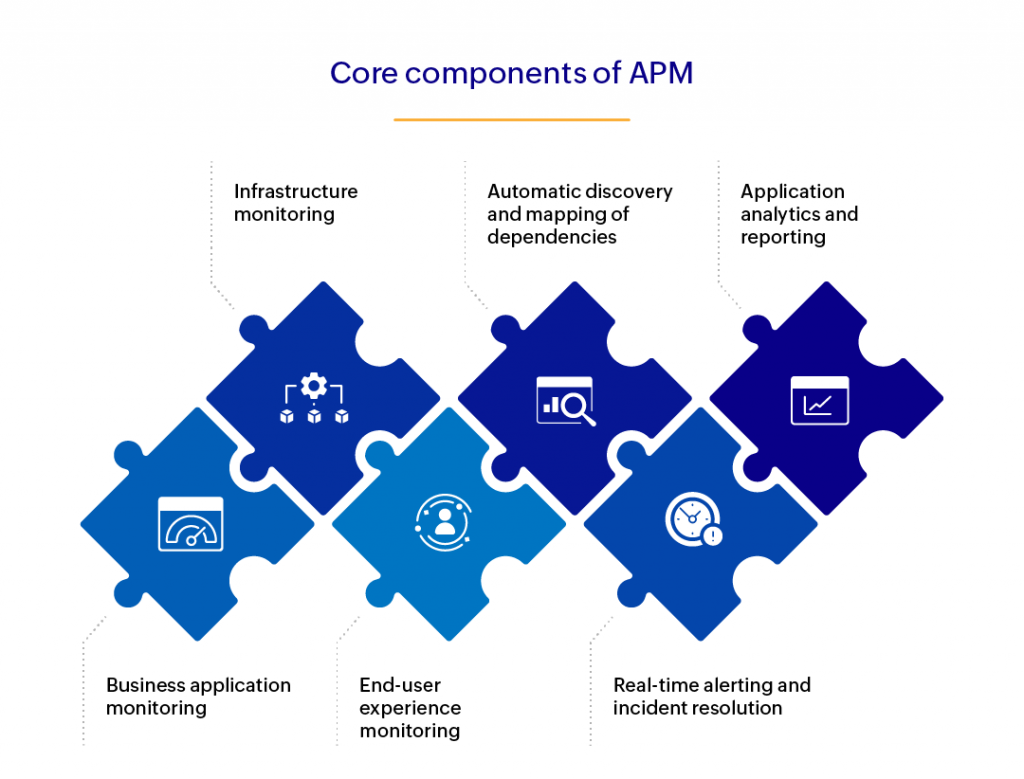
When it comes to APM, gaining end-to-end visibility into your application stack is necessary to ensure your application is performing optimally. Here are some of the core components that are involved in APM:
Business application monitoring
Monitoring the effectiveness of your application is a vital step in maximizing its output and enhancing business operations. Once your application has finished the development stage and is live, closely monitoring its performance is essential to identify and address any issues that may arise. Real-time insights into the inner workings of your application can greatly impact the accuracy of your business outcomes.
By tracking individual transactions and key elements such as database calls, thread profiles, and error reports, you can gain a comprehensive understanding of what may be causing any slowdowns in your application. Understanding the relationships between different components of your application’s architecture with the aid of service maps can also greatly aid in troubleshooting and resolving any problems before they affect your business operations.
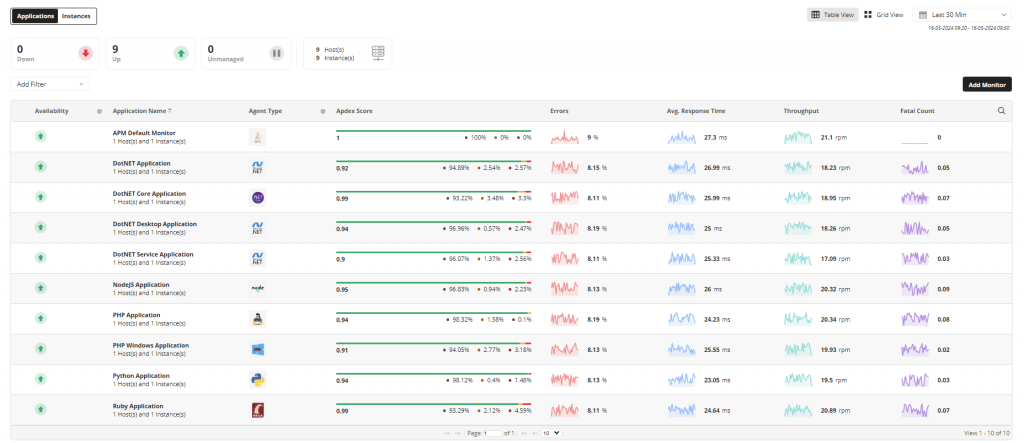
Infrastructure component monitoring
Many businesses adopt a diverse business infrastructure to support their applications with elements ranging from servers, databases, networks, application servers, etc. With the adoption of cloud platforms and other modern technologies, infrastructure monitoring has expanded to include virtualized environments, cloud infrastructure, microservices, containers, and more. Also, many businesses adopt a diverse business infrastructure consisting of multi-cloud platforms and hybrid cloud architectures that involve a mix of on-premise and cloud workloads.
Gaining in-depth insights into the underlying infrastructure components supports the application’s performance requirements and provides early warnings of potential issues to resolve, facilitating performance optimization, capacity planning, and cost management overall.
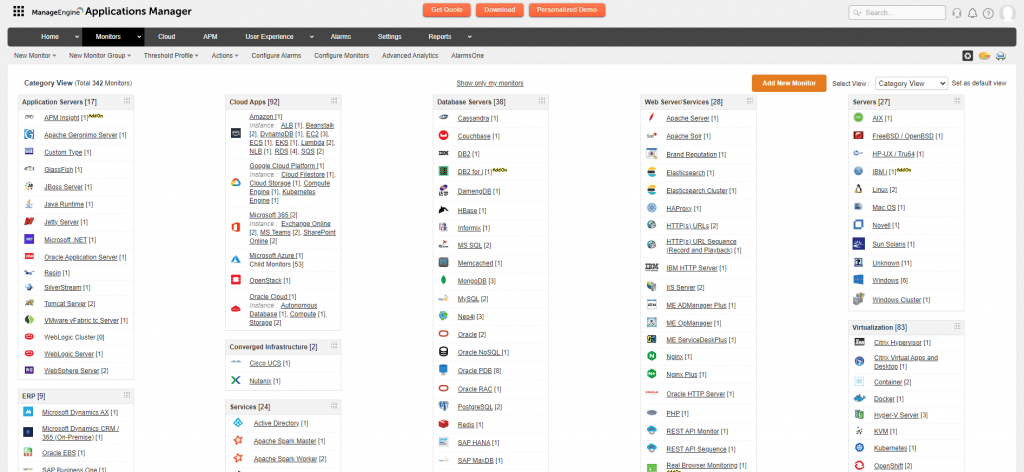
End-user experience monitoring
Maintaining a favorable end user experience for users is crucial for the success of any business application. While gaining visibility into backend functionality is crucial, it is equally important to monitor the frontend to ensure a seamless user experience. Neglecting the frontend can lead to frustrated users and decrease customer satisfaction and retention.
Obtaining a complete understanding of your application’s front-end performance from start to finish can aid in recognizing how digital services function and how users engage with them in real time, resulting in enhanced user loyalty, reduced costs, retained customers, and elevated revenue. Monitoring your web application’s real user experience and acquiring real-time insights into its front-end performance allows you to observe how users from various locations interact with your application. You should also track the performance from the back end by simulating crucial user actions using synthetic monitoring, tracking individual page URLs, monitoring APIs, and more.
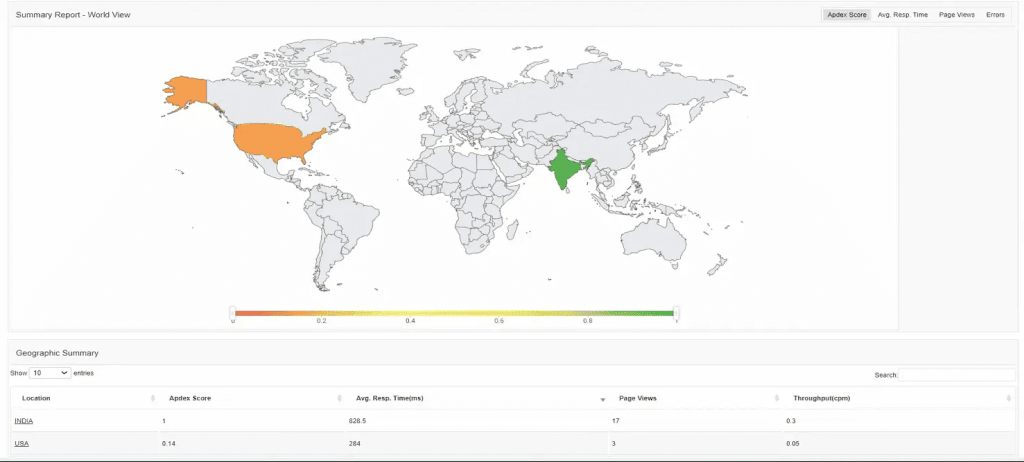

Automatic discovery and mapping of dependencies
In a rapidly evolving business landscape, effectively managing multiple infrastructure components is crucial in developing an efficient APM strategy. This necessitates a thorough understanding of individual components and their corresponding dependencies within the application infrastructure. When it comes to resolving incidents, having a comprehensive understanding of these interdependencies and how they impact overall performance is crucial for proactive identification and resolution of potential issues before they escalate. This minimizes downtime and ensures a seamless user experience.
By gaining a holistic view of the interconnections between various resources and infrastructure components within an application, you can maintain awareness and quickly identify affected resources in the event of performance outages. This involves continuously discovering applications running on different servers, creating visual maps to illustrate their interconnections, and regularly updating the maps with newly-discovered resources. This ensures that the maps accurately reflect the current state of the application infrastructure in real time.
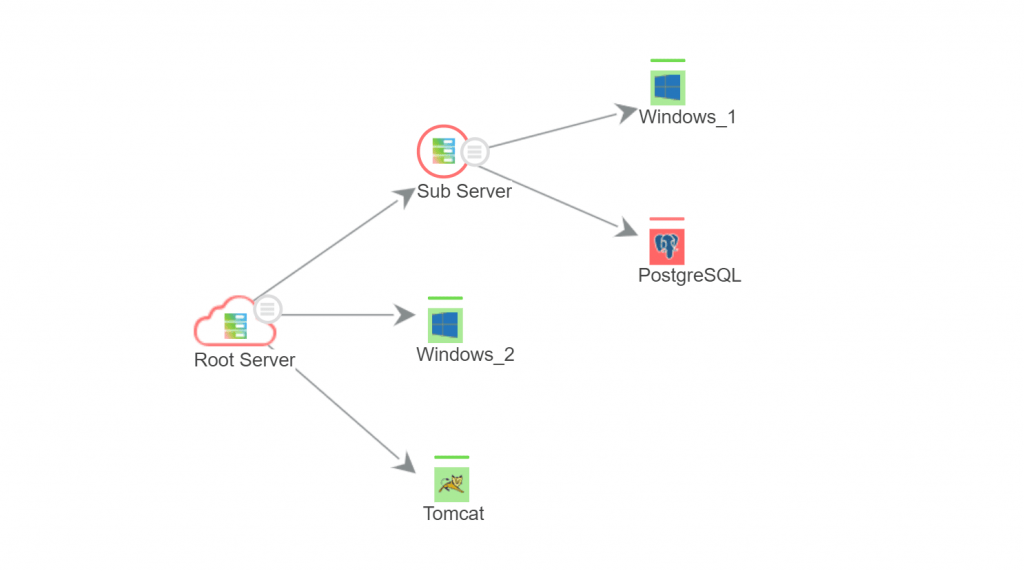
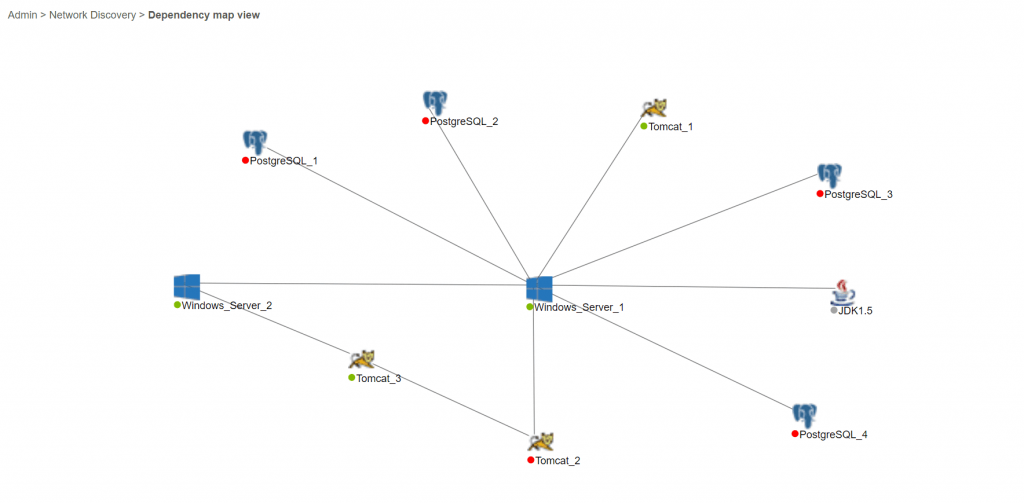
Real-time incident alerts
One of the crucial requirements in APM is the ability to obtain alerts in real-time. It helps to quickly detect application downtime or slowdown and other performance issues. These alerts must have thresholds that are configurable for both individual metrics and the overall application to track performance bottlenecks at the granular level. Obtaining alerts through a variety of channels, such as email, SMS, Slack messages, along with ITSM tool integrations like ServiceNow, ManageEngine ServiceDesk Plus will help IT admins to get notified in real-time. Additionally, they should also have the capability to perform preconfigured, automated actions such as running scripts or batch files, restarting virtual machines or container instances, executing MBean operations, and generating heap dumps/thread dumps/garbage collections or webhooks. These automated actions can greatly aid in faster troubleshooting and resolving any issues that arise.
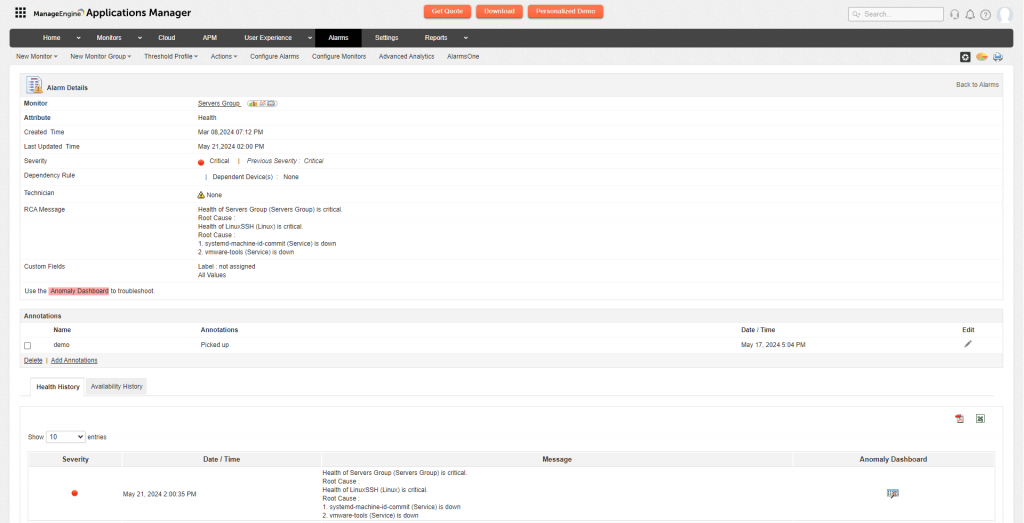
Application analytics and reporting
It is imperative to acquire thorough performance analytics for your application infrastructure in order to monitor effectively and evaluate the performance of your applications over time. While monitoring your entire application stack can be beneficial for performance tracking, delving deeper into the performance of individual application components can provide a comprehensive understanding of how your application infrastructure is truly functioning, particularly in hybrid or microservices architectures. This level of insight can assist in identifying areas for enhancement, predicting application performance, and promptly detecting complex issues.
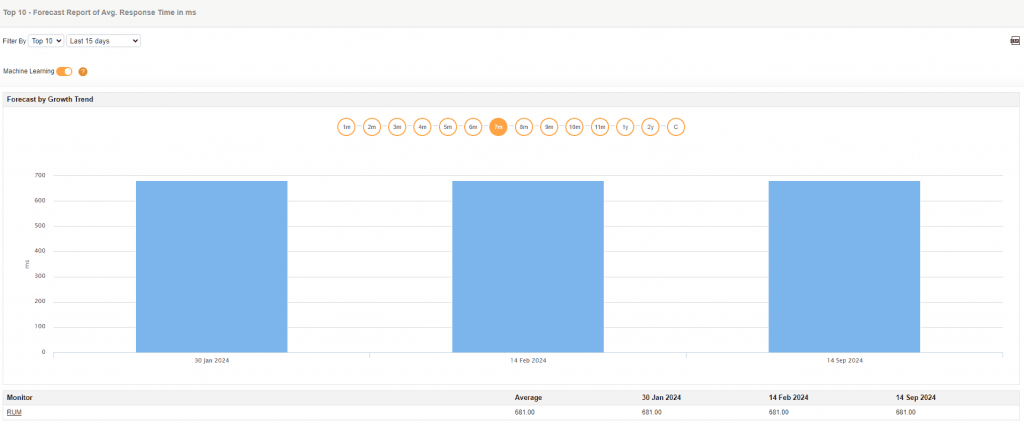
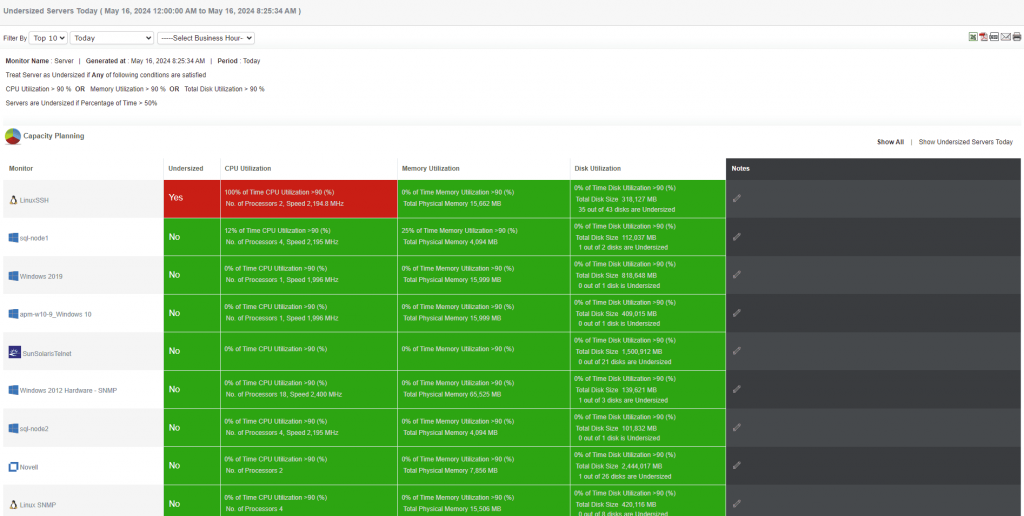
Step up your APM game with Applications Manager
In the highly competitive landscape of modern business, maintaining peak application performance is essential for achieving success. Applications Manager offers a powerful APM solution that offers comprehensive insights into the key elements of your application, allowing for effective management and monitoring to enhance performance. Whether dealing with microservices, cloud-native structures, or distributed setups, Applications Manager provides real-time monitoring, complete visibility, and performance analytics. This empowers businesses to deliver a flawless user experience, boost productivity, and minimize downtime with a robust APM software, enabling them to fully unleash the capabilities of their applications and stay ahead of their rivals.
If you haven’t used Applications Manager yet, you can get a 30-day, free trial and start using it alongside your other infrastructure components immediately.

